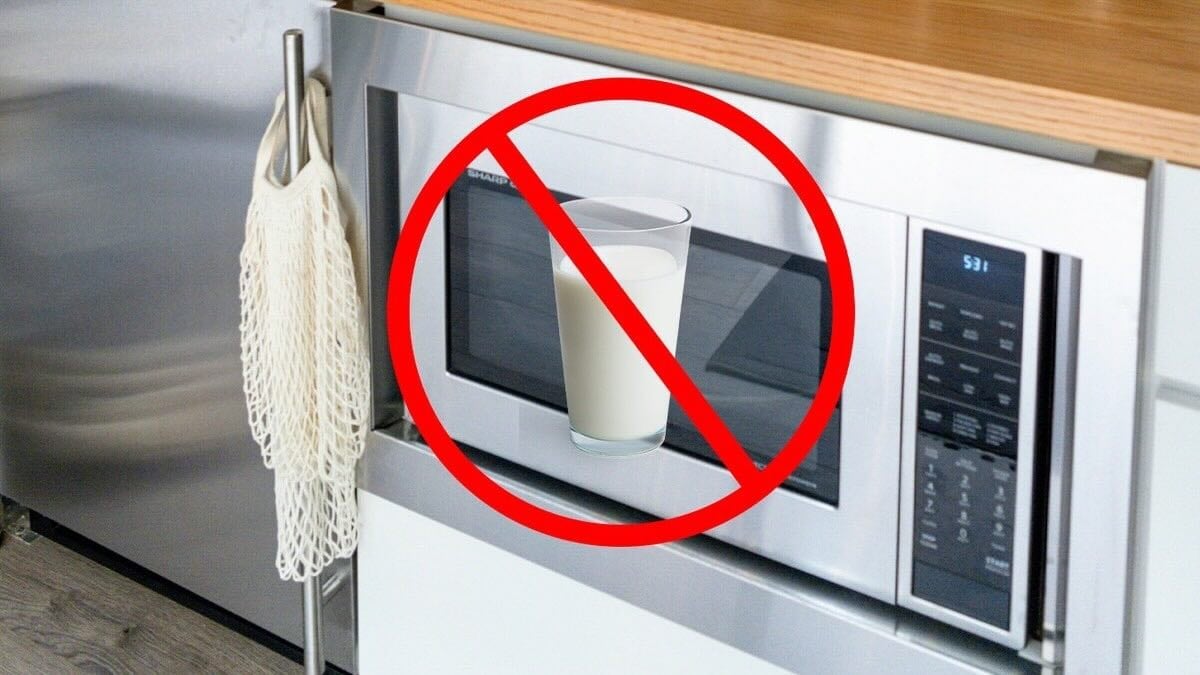Hot drinks feel harmless, yet the way we heat them can turn risky fast. When water or milk goes into the microwave, heat builds in pockets you cannot see. A small nudge can trigger a sudden boil. Burns happen in seconds. Knowing why this occurs, and how to warm liquids with control, helps you keep comfort and safety in the same cup. What looks calm on the surface can hide unstable heat. With a few simple habits, you keep the taste you want and the risk you don’t.
Why the microwave makes hot drinks risky
Microwaves excite water molecules. The result is uneven heat with hot spots next to cooler zones. When you heat water in the microwave, the surface may look still while energy loads beneath. A light tap, a spoon, or a lift from the turntable can set it off. Then steam surges and the liquid erupts. Milk adds another layer. Proteins unfold and can form a thin skin. Sugar and proteins may brown at edges.
These changes trap heat and splash as you stir. A cup that feels warm outside can hide a scald inside. Children and older adults get hurt more easily. Thin skin and slower reflexes increase risk. The easy habit saves time, but the safety margin shrinks. A safer routine keeps heat even and movement gentle. Keep your face back and stir away from your body to avoid steam bursts.
How superheating turns still liquid into a sudden boil
Superheating happens when liquid gets hotter than its boiling point without bubbles. It needs smooth walls, very clean cups, and rapid energy input. That list describes many kitchens. The wave pattern in a cavity creates nodes and hot pockets. Because the microwave heats fast, nucleation sites may not form. So bubbles lag while temperature climbs. Then a seed—dust, a stir, or a teabag—starts violent boiling.
The splash can burn your mouth, hands, and face. Milk behaves the same and can foam. Skin tears as steam escapes. Tilted cups make spills worse. Thick mugs hide danger because they insulate your grip. You feel safe and pour too soon. Short pauses help bubbles start. Gentle stirring releases trapped energy. Let cups rest before you move them. Safe steps reduce surprise.
What burns look like and how to use the microwave safely
Home injury reports keep pointing to scalds from hot drinks. Many happen right at the door. A still surface fools the eye, then erupts when nudged. Food safety specialists warn that superheated liquids cause deep tissue burns. As one expert notes, the risk deserves clear public guidance. The fix starts with tools and timing. Use containers labeled microwave-safe.
Avoid sealed jars and narrow necks. Heat in short bursts and stop to stir. Because the microwave creates hot spots, a wooden stirrer or microwave-safe spoon helps bubbles form and release. Keep faces back when opening the door. Slide the turntable out and test a small sip with care. Hold the cup with a dry towel, not wet mitts. Wet fabric transfers heat faster and can scald skin. Small habits matter every day.
Better ways to warm water and milk without guesswork
A stovetop gives steady heat and clear feedback. You see small bubbles at the base before a full boil. You can switch off right away. An electric kettle brings water to a set temperature. Many models include presets for green tea, coffee, or cocoa. That control protects flavor and cuts risk. Milk prefers low, even heat. A small saucepan and a silicone spatula work well. Warm it slowly and stir the bottom.
Stop when thin steam rises and edges quiver. No skin, no foam, no surprise. If you must use a microwave oven, make it safer. Choose a wide mug with a smooth interior. Add a clean wooden stick to provide nucleation. Heat in 20–30 second steps. Stir between steps and wait before lifting. Check the temperature with a spoon, not your lip. Use dry oven mitts ;moisture speeds heat transfer and can scald.
Safer warming choices that protect hands, faces, and routines
A calm routine keeps comfort and safety together. Choose tools that give control, then go slow. A kettle or pan adds seconds, yet it removes hidden risk. When time is tight, you can still limit danger. Short bursts, a stir stick, and a pause reduce spikes. Keep handles dry and grips firm. Teach kids to wait before sipping. Remind guests to stir first. The goal is simple. You want heat you can see and trust. Eruptions stop when energy releases gently. With steady methods, hot drinks stay soothing. You keep the habit and avoid the harm. And when you do use the microwave, treat the quiet surface with respect. Let it rest, then test. Small steps turn a risky moment into a safe one.
